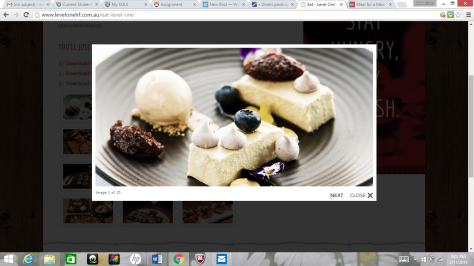I have worked in hospitality for just over two years now and have started to notice a growing trend. That trend is the use of mobile phones whilst dining out. People whilst physically socialising just can’t seem to let go of their online connectedness and personal public sphere. The use of phones in restaurants for instagraming, pinterest, twitter and check-ins have created a media space for people to connected over similar interests and communicate around the world. Due to this I have chosen to develop a digital story as I attempt to uncover insights about this new forming spatial media group. I will be looking at both secondary research findings and my primary research findings through conducting interviews.
Currently on Instagram (31/10/2015 at 2:00am) there is 8,439.961 posts that hashtag #foodstagram. This is a well-known colloquial hashtag for posting food online. The hashtag #food however has over a whopping 150 million posts. There is no doubt that looking at these images can get your tummy rumbling but why do people post these photos and does is affect anyone in the media space?
It has been debated whether using a mobile phone while out at dinner is inappropriate and when did we ‘lose’ our sense of dine etiquette? Josh Ozersky wrote in his article “Is It O.K. to Eat While Texting” That we need to identify customers as customers and not guests, that people are paying for a evening out and therefore should incur a right to do what they want, without judgement, even if this means the customer instagraming every dish that comes out of the kitchen. Throughout my experience in hospitality I have found that taking photos of your meals is the norm. When I discussed this with guests the last two weeks I attempted to understand why people take photos of their food. Many of them said that it is a way of experiencing it all again. That it gives insight into a holiday or trip they are on and helps them remember and show others their experiences in hope to trigger a more emotional and sensory response. I also found whilst discussing with patrons that there was no ethnographic trend in either gender nor age nor marital status. People were taking photos of both their dishes and beverages whether they were on dates, in business meetings or celebrating a function.
An article written by David McCormack explores how a restauranteur undertook an observation style experiment to discover why service in restaurants has got so much slower. McCormack’s findings reveal that the reason behind slower service times is due to mobile phone use as customers are too distracted with their screens then being in the ‘here and now’. The findings were that an average meal time in 2004 was 1 hour and 5 minutes while in 2014 it was 1 hour and 55 minutes due to customers distracted by taking photos.
Research has shown that people feel more comfortable sharing online through a screen rather than face to face. Therefore from this people are more likely to share their photos of food and dinning to create a space in media for people to connect, and this is part of the new trend in the food industry, creating a fad.
I interviewed two people in different areas from my workplace. The first was Georgia who is a waitress and bartender. Alike me, she experiences the same environment within the hospitality workplace and states “we almost create a performance in the way we plate food and garnish cocktails, other venues kitchens and many people when cooking at home do not go to the same amount of effort to present a dish and that could be a major reason people are so intrigued by what we do here”.
The second is William who works as a dessert chef in the kitchen. He agree
d with what had been stated and agrees he puts a lot of effort into how  a plate looks and stated that “it is nice to feel like someone is appreciating the work it took to create such a delicate dish”. He also stated that he has his own
a plate looks and stated that “it is nice to feel like someone is appreciating the work it took to create such a delicate dish”. He also stated that he has his own
Instagram where he uploads the dishes he makes at work to help show his friends and followers his career from his point of view.
(An example of one of the desserts – By William)
The food industry scene also uses photos of their dishes as a marketing tool for a few years and is now increasing rapidly. Instead of looking at a menu we now look through images of a restaurants web page or through their social media such as Instagram and Facebook. This could be and influence and driving force of the new fad or taking photos of food in restaurants as the dish is an identifier of the venue. Due to this most restaurants do encourage the use of phones to take photos by providing free Wi-Fi in venues for patrons to use, it does create free marketing for the venue as a benefit. According to Statista 57% of people claimed it should be encouraged due to the nature of free advertising and 32% of people claimed they didn’t mind as long as taking the images was discrete with only 11% of people left who were either undecided or discouraged the use of phones and taking photos of meals in restaurants. Virgin mobile have noticed this new trend and fad and have come up with a way to help and encourage it. They have created the meal for a meal campaign that focusses on people taking a photo of their meals and posting on Instagram of Facebook with the hashtag #mealforameal and in turn virgin mobile will then give a real meal to a real person in need. This creates a way to make a real difference using what we do on a daily basis.










Recent Comments